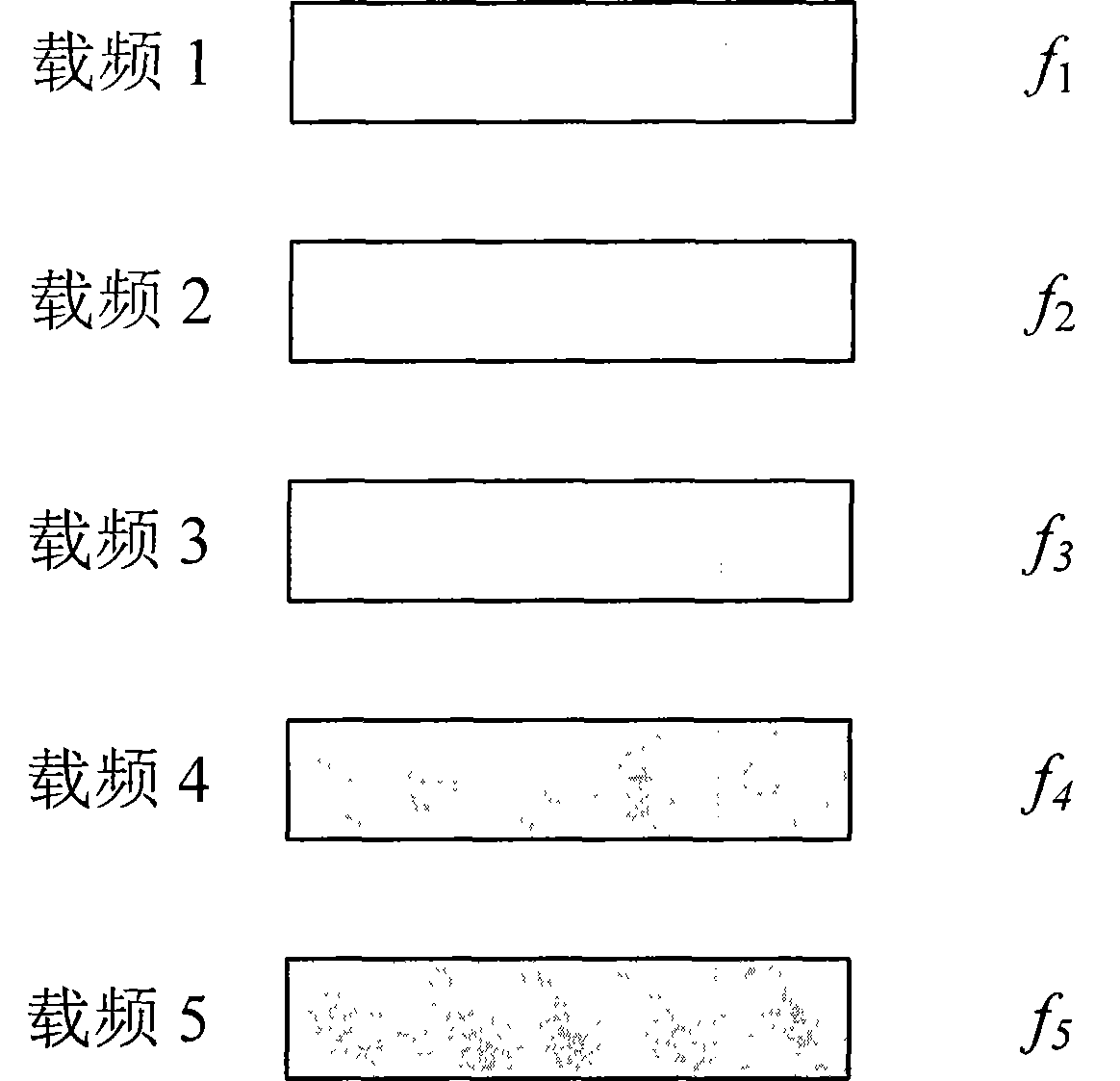Descending control channel assignment and blind test method
A technology of control channel and allocation method, which is applied in the design of downlink control information format, blind detection of downlink control channel by user equipment, design of downlink control channel of LTE-Advanced system, and can solve problems such as waste of resources
- Summary
- Abstract
- Description
- Claims
- Application Information
AI Technical Summary
Problems solved by technology
Method used
Image
Examples
Embodiment 1
[0125] An improved DCI format is introduced for LTE-Advanced user equipment to perform blind detection on the basic carrier frequency. An improved method is to add a field in the originally defined DCI format to indicate the carrier frequency where the user's PDCCH information is located. The originally defined DCI format may be the DCI format defined in LTE, and / or the DCI format newly introduced by the LTE-Advanced system for blind detection of non-basic carrier frequency. In this example, the DCI format defined in LTE is the originally defined DCI format. Such as figure 1As shown, the system bandwidth includes 5 carrier frequencies, so each DCI format needs to add a 5-bit field, and the corresponding improved DCI formats are respectively named Format0', Format1', Format1A', Format1B', Format1C', Format1D', Format2' and Format2A'.
[0126] In order to better illustrate the improved DCI format, Format1A' is taken as an example below to describe each field in detail.
[0...
Embodiment 2
[0177] An improved DCI format is introduced for LTE-Advanced user equipment to perform blind detection on the basic carrier frequency. An improved method is to add a field in the originally defined DCI format to indicate the carrier frequency where the user's PDCCH information is located. The originally defined DCI format may be a DCI format defined in LTE, and / or a DCI format newly introduced by the LTE-Advanced system for blind detection of non-basic carrier frequencies. In this example, the DCI format defined in LTE is the originally defined DCI format. Such as figure 1As shown, the system bandwidth includes 5 carrier frequencies, so each DCI format needs to add a 5-bit field, and the corresponding improved DCI formats are respectively named Format0", Format1", Format1A", Format1B", Format1C", Format1D", Format2" and Format2A".
[0178] In order to better illustrate the improved DCI format, the following takes Format1A" as an example to describe each field in detail.
...
Embodiment 3
[0231] On the basis of the above improved DCI format, a new DCI format is introduced for LTE-Advanced user equipment to perform blind detection on the basic carrier frequency, which is named Format X in this example. This format contains only one PDCCH index information, 4 bits.
[0232] The corresponding relationship between the DCI format and the transmission mode used by the LTE-Advanced user equipment for blind detection on the basic carrier frequency can be described by the following table 4 or table 5:
[0233] Table 4
[0234] transfer mode Refer to the DCI format 1 1', 1A', X 2 1', 1A', X 3 2A', X 4 2’,X 5 1D',X 6 1B',X 7 1', 1A', X
[0235] table 5
[0236] transfer mode Refer to the DCI format 1 1", 1A", X 2 1", 1A", X 3 2A", X 4 2”,X 5 1D", X 6 1B", X 7 1", 1A", X
[0237] The above table is for example only, and the present invention is not limited t...
PUM
 Login to View More
Login to View More Abstract
Description
Claims
Application Information
 Login to View More
Login to View More - R&D
- Intellectual Property
- Life Sciences
- Materials
- Tech Scout
- Unparalleled Data Quality
- Higher Quality Content
- 60% Fewer Hallucinations
Browse by: Latest US Patents, China's latest patents, Technical Efficacy Thesaurus, Application Domain, Technology Topic, Popular Technical Reports.
© 2025 PatSnap. All rights reserved.Legal|Privacy policy|Modern Slavery Act Transparency Statement|Sitemap|About US| Contact US: help@patsnap.com



